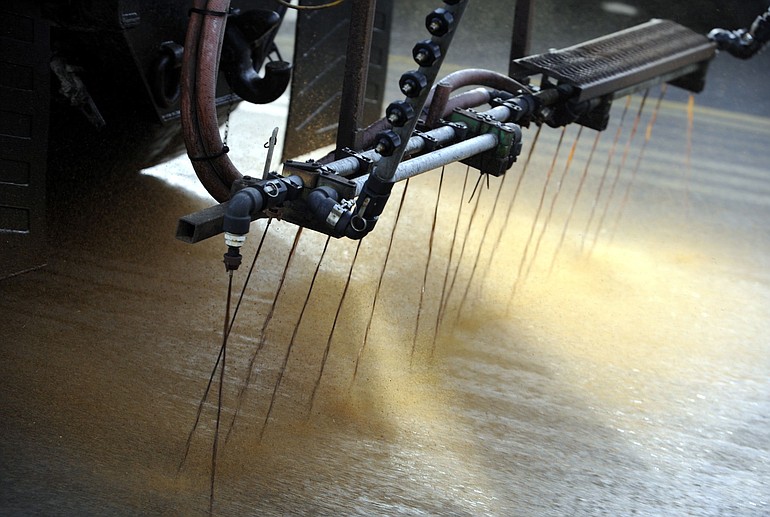Add this to the list of signs that winter is coming: the sight of snow plows, tire chains and road salt ready for action.
But even with its winter fleet mobilized, all the Washington State Department of Transportation can do this time of year is wait to see what the 2011-12 season will actually bring.
WSDOT incident response supervisor Chris Vigna’s wish? “I hope it’s nice and mild,” he said.
Forecasts so far suggest the opposite. After a strong “La Niña” weather pattern produced huge rainfall and snowpack totals last year, the same trend has developed — and is strengthening — this year, said Warning Coordination Meteorologist Tyree Wilde of the National Weather Service. That points to another cool, wet winter on tap for the Pacific Northwest, he said.
On a chilly Tuesday morning, a small group of WSDOT officials joined Wilde, Washington State Patrol Trooper Ryan Tanner and others for a sort of winter preview at WSDOT’s Vancouver operations facility. Officials offered de-icer and chaining demonstrations, plus basic driving tips for everyday motorists.
Tanner started with the most basic pointer: Drive slower.
“Speed limits are really for ideal driving conditions,” Tanner said. “During adverse conditions, one of the best things you can do is simply slow down.”
Drivers should also carry winter supplies in their cars, Vigna said, particularly when tackling a mountain pass. That means bringing along chains, a first aid kit, a flashlight, flares, a blanket, gloves, water and snacks. Drivers may also use studded tires starting Nov. 1 under Washington law. And a charged cell phone is always a good idea, Vigna said.
WSDOT’s incident response crews often help out with “fender benders and slip-and-slides” caused by ice and snow, Vigna said. Many people also find themselves in trouble by running out of gas, he added. For winter travel, WSDOT recommends not letting the fuel gauge fall below half a tank.
“It’s just as easy to keep the top half full as the bottom half,” Vigna said.
When winter weather hits Southwest Washington, WSDOT focuses on keeping Interstate 5 and Interstate 205 clear first. Next on the priority list are secondary state highways such as 14, 500 and 502 in Clark County.
Crews used close to 600 tons of road salt in Clark and Cowlitz counties alone last winter, said WSDOT spokeswoman Abbi Russell. At the Vancouver facility, a pile of 200 to 250 tons of salt waits under a covered shed for the upcoming season.
Two trucks made one of their first test runs Tuesday morning. As the first drove around the facility tossing salt out the back, the second followed spraying liquid de-icer — a brine made partly with desugared molasses and salt water. Both are used to melt ice and snow on roadways, and are sometimes applied before or during a winter weather event.
Don’t expect snow in the Vancouver area anytime soon. But this week did bring a “frost advisory” from the National Weather Service, with low temperatures expected to dip into the mid-30s early Wednesday morning.
Eric Florip: 360-735-4541; www.twitter.com/col_enviro; eric.florip@columbian.com.




